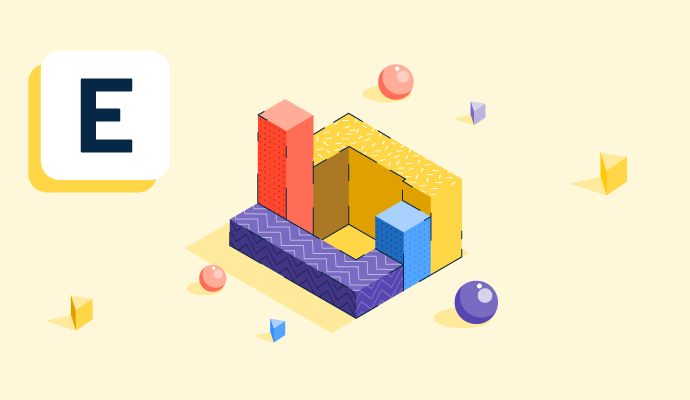What is enterprise asset management?
Enterprise asset management (EAM) is the process of tracking, monitoring, and maintaining an organization’s physical assets. By managing these assets throughout their life cycles, organizations optimize their usage, ensure reliability, and reduce costs.
Enterprise asset management is common in construction, utilities, mining, and defense industries. These companies have substantial fixed and moveable assets, including expensive machinery, equipment, and facilities.
Organizations use enterprise asset management software to measure and track equipment usage, performance, costs, and maintenance. This software includes lifecycle planning tools and advanced metrics so maintenance teams can make strategic, data-driven decisions about assets.
Key elements of enterprise asset management
EAM software helps companies maximize their return on assets (ROA) by managing equipment processes, analytics, and reporting. Some functions that fall under the umbrella of enterprise asset management include:
- Asset lifecycle management: EAM monitors the entire equipment lifecycle, from purchase to asset retirement.
- Maintenance planning: With EAM software, companies plan and manage asset inspections and repairs, including who’s responsible, what tools or materials are needed, and when the maintenance should happen.
- Environment, health, and safety (EHS): Organizations must keep their equipment in good working order to comply with environmental and safety regulations. EAM helps companies conduct incident analyses and document concerns.
- Supply chain management: EAM solutions simplify inventory management to cut costs and increase efficiency. With an EAM platform, organizations can procure materials from vendors for building and maintaining assets and track internal inventories.
- Work order management: With enterprise asset management software, companies can create work orders from the field, alert the responsible team, and track work order completion.
Benefits of enterprise asset management
Large organizations use enterprise asset management to save time, increase efficiency, and control costs. Specific benefits include:
- Improving asset performance: Enterprise asset management increases equipment uptime and reliability by implementing preventative and predictive maintenance strategies. This helps improve companies’ workflows and boosts production.
- Extending equipment lifespans: Proactive lifecycle planning and monitoring maintenance schedules help prolong the life of assets, leading to reduced operational costs. Companies can also analyze data within EAM software to gauge the best time to retire an asset to optimize usability and value.
- Ensuring regulatory compliance: To mitigate potential risks, enterprise asset management helps companies comply with industry requirements, environmental regulations, and safety standards. EAM software also centralizes the storage of asset information to facilitate document retrieval for audits and inspections.
- Facilitating collaboration: With enterprise asset management software, companies have a central platform for sharing information, communicating with team members, and managing work orders. As a result, they experience better workflows and increased productivity.
Enterprise asset management best practices
Enterprise asset management helps large organizations create and maintain orderly systems to keep track of their equipment. For best results, an organization should follow these practices:
- Choose the right tool: To implement enterprise asset management successfully, organizations need a software platform that’s easy to use, offers real-time visibility, and features powerful analytics. The right EAM tool will integrate seamlessly with key tools in the organization’s tech stack, like its enterprise resource planning (ERP) system, which automates and manages business operations.
- Train employees: When introducing a new system like EAM, organizations should train employees on new maintenance protocols or inspection procedures. Workers should know how to use EAM software features like how to enter data or run reports. This fosters a collaborative environment and helps encourage buy-in because workers can see its value.
- Implement a maintenance schedule: Organizations should set up a preventative maintenance schedule instead of just fixing equipment when it breaks. Workers should inspect equipment regularly, stay on top of routine maintenance tasks, and follow repair schedules. With a disciplined approach, enterprises minimize unplanned downtime and optimize for efficiency.
Enterprise asset management vs. computerized maintenance management system (CMMS)
When organizations start searching for a way to manage their equipment maintenance systems, they’ll likely encounter two possible solutions: enterprise asset management software or computerized maintenance management systems.
.png)
Although often mentioned in the same breath, these solutions differ in scope and functionality.
Enterprise asset management is a comprehensive platform that manages the entire asset lifecycle. It goes beyond maintenance management to cover asset planning, acquisition, operation, and disposal.
A computerized maintenance management system is a tool for managing and scheduling maintenance activities. It’s more focused on the operational side of maintenance management, including creating work order processes and tracking asset repairs.
An EAM platform is broader in scope than a CMMS. Larger organizations with more assets and complex needs often opt for an EAM, while small-to-medium-sized businesses (SMBs) might lean toward a CMMS.
Not sure how to choose a computerized maintenance management system (CMMS)? We've got you covered.

Kelly Fiorini
Kelly Fiorini is a freelance writer for G2. After ten years as a teacher, Kelly now creates content for mostly B2B SaaS clients. In her free time, she’s usually reading, spilling coffee, walking her dogs, and trying to keep her plants alive. Kelly received her Bachelor of Arts in English from the University of Notre Dame and her Master of Arts in Teaching from the University of Louisville.











